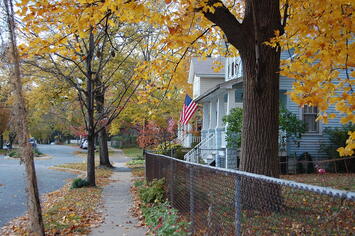
After the US Surgeon General Advisory raised the alarm over the “devastating impact of the epidemic of loneliness and isolation in the United States,” the Washington Post jumped into the discussion of loneliness with a highly recirculated advice column that presented ideas to prevent social isolation and a national friendship recession.
The piece’s author, a clinical psychologist, is correct to note that a diminishing share of Americans report having no one to call in a time of need. The author adds that meaningful social connections are some of the strongest predictors of a healthy and happy life. Yet, making friends today is remarkably challenging especially for adults. To combat the difficulty in making friends, the column suggests to stop waiting for the ideal conditions for socialization. In short, be “nosy.”
The author gives a charge to adults: “Start a conversation next time you are waiting in line, instead of looking at your phone. Chat with the other parents in the school pickup line, checkout clerks in stores, front-desk staff at your dentist or doctor, or the barista at your favorite coffee shop.” And these actions are so critical because it has repeatedly been shown that when adults engage with strangers or acquaintances, they often feel better, have a sense of belonging, learn something new, have a renewed sense of creativity, and feelings of loneliness decrease.
While important, the advice does not go far enough to address the state of national loneliness. While the individual plays a strong part in the restoration of community, there must be spaces and places for relationships – both strong and weak – to form. Too many communities and neighborhoods around the nation regularly lack sufficient social infrastructure to help foster and reinforce our connections and relationships. In other words, social capital is not only influenced by individual interactions as the Post’sauthor suggests but other factors are critical and the environment in which citizens are embedded plays a vital role. The spatial and physical elements of a community – amenities like parks, libraries, playgrounds, cafes, and community centers – as well as the varied programs and policies in place can have huge impacts here on propinquity and in creating and sustaining conditions to meet and socialize.
Research has repeatedly demonstrated that Americans who live in closer proximity to community amenities like parks, libraries, restaurants, and theaters, are appreciably more content with their neighborhood, more trusting of others, and, most importantly far less lonely regardless of whether they live in large cities, suburbs, or small cities or towns. The data show that residents of amenity-packed neighborhoods are more likely to say their community is an excellent place to live, to feel safer walking around their neighborhood at night, and to report greater interest in neighborhood goings-on. And, as a direct result of these trends, those Americans who live in communities with little access to amenities have a far greater likelihood of feeling socially isolated. In fact, the data illustrate that even after taking into account for an individual’s social class, education, gender, and race, amenity access predicts feelings of community satisfaction, social trust, and social isolation.
Read the rest of this piece at AEI.
Samuel J. Abrams is a professor of politics at Sarah Lawrence College and a senior fellow at the American Enterprise Institute.
Photo: Jessica via Flickr under CC 2.0 License.













is this phrase correct?
psychologist, is correct to note that a diminishing share of Americans report having no one to call in a time of need.